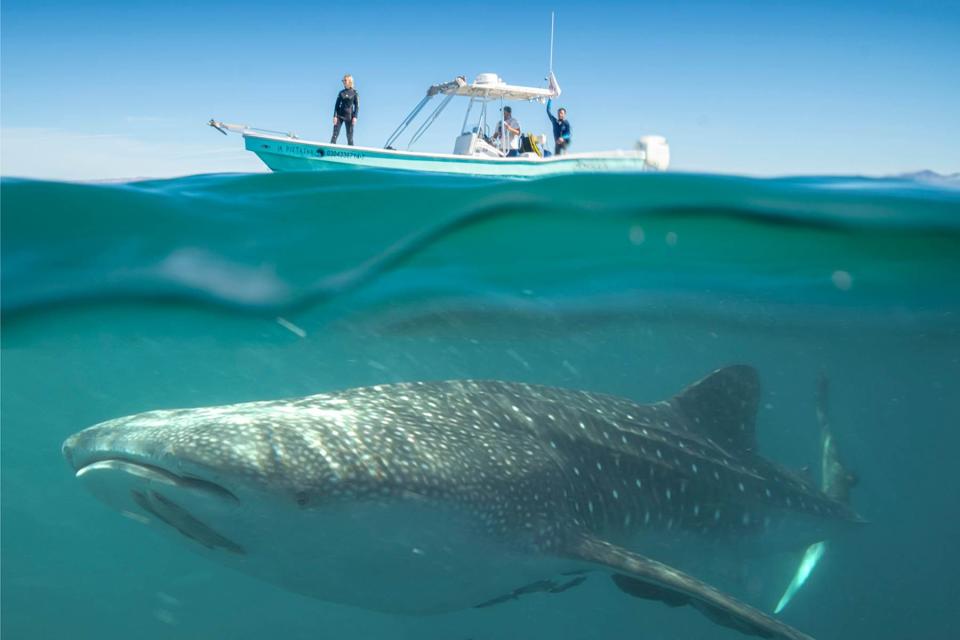These Hidden Lagoons in Baja California, Mexico, Are the Best Place to See Baby Whales
You might also spot blue whales, dolphins, and four types of endangered sea turtles.

Virro Borja/Courtesy of FITUPAZ
In the middle of the Baja California peninsula is Mexico’s largest protected area: the El Vizcaino Biosphere Reserve. The reserve, which is also a UNESCO Heritage Site, has a little of everything — deserts and mountains house an abundance of species, some under threat of extinction, along with fossil beds and petroglyphs.
Things only get more interesting when you head toward the Pacific. Embedded within the reserve is the Whale Sanctuary of El Vizcaino, a 370,950-hectare sanctuary comprising two coastal lagoons off the Pacific Ocean: Laguna Ojo de Liebre and Laguna San Ignacio. Together, the lagoons act as the world’s most important breeding ground for gray whales, specifically, the once-endangered eastern subpopulation.

Virro Borja/Courtesy of FITUPAZ
Each year, from January to March, these giant creatures return to the lagoons from their summer feeding grounds in the Chukchi, Beaufort, and Bering Seas. They come to give birth and mate in the temperate waters, offering whale watchers with patience and good timing a rare glimpse at a new mother swimming with her newborn calf.
In addition to providing safety to gray whales during their annual birthing and mating times, the coastal lagoons of Ojo de Liebre and San Ignacio are also the winter home to bottlenose dolphins and blue whales, the largest animal on earth. Visitors will also spot wintering harbor seals, California sea lions, northern elephant-seals, and four species of the endangered marine turtles in the lagoons.
Local Whale-watching Operators
Kuyimá, a San Ignacio-based tour company with more than 30 years of experience and local staff, is the best option for a day of whale watching within the sanctuary. They offer small-group tours (four to 10 people a boat) daily from January 15 to April 15. For those looking to spend more than a couple hours on the water, there’s a full-day option that includes an overnight stay and meals.

Courtesy of FITUPAZ
Travelers who want to go a bit deeper should look into Baja Discovery, a land-based whale-watching camp within the Whale Sanctuary of El Vizcaino. The safari-style camp keeps their offerings simple and environmental impact low, but promises “incredible opportunities to view these gentle giants 24 hours a day,” according to the company's website. And while the camp notes that “you can actually watch the whales from your tent door,” their five-day whale-watching trip also includes daily boat outings (plus a door-to-door service from San Diego, California).
How to Get to the El Vizcaino Biosphere Reserve
The El Vizcaino Biosphere Reserve and the whale sanctuary are not easy to get to, which is partially what makes the destination so appealing. You won’t be on a giant boat or overcrowded tour.
To get to the town of San Ignacio and the nearby lagoons, your best bet is to fly into Loreto (LTO) and either rent a car or hop on the bus (both take less than four hours). You can also fly into La Paz (LAP) and make the eight-hour journey by car.
For more Travel & Leisure news, make sure to sign up for our newsletter!
Read the original article on Travel & Leisure.
Solve the daily Crossword

